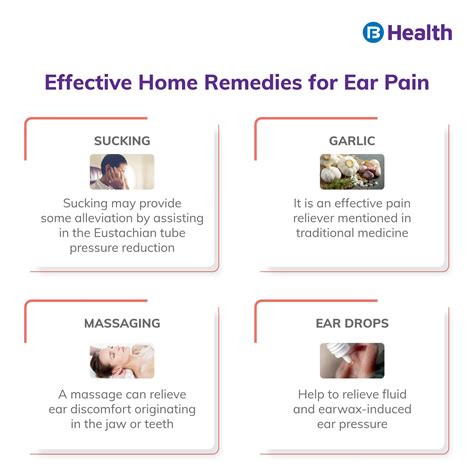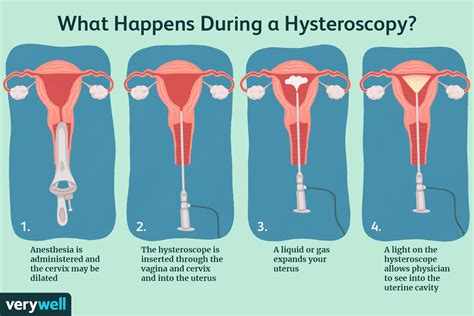The eardrum, a vital component of our auditory system, plays a crucial role in our ability to hear and maintain balance. Despite its importance, many of us take our eardrums for granted until we experience discomfort or pain. Understanding the intricacies of the eardrum can help alleviate concerns and reduce pain associated with eardrum issues. Here are 10 fascinating facts about the eardrum that can help you better appreciate its function and take steps towards a healthier auditory system.
Location and Structure: The eardrum, also known as the tympanic membrane, is located at the end of the ear canal and separates the outer ear from the middle ear. It’s a thin, semi-transparent membrane that’s approximately 1 cm in diameter. The eardrum is composed of three layers: an outer epithelial layer, a middle fibrous layer, and an inner mucosal layer. This unique structure allows it to vibrate in response to sound waves.
Vibration and Sound Transmission: When sound waves reach the eardrum, they cause it to vibrate. These vibrations are then transmitted through three tiny bones in the middle ear, known as ossicles, to the inner ear, where they’re converted into electrical signals that are interpreted by the brain as sound. This complex process highlights the eardrum’s critical role in our ability to perceive sound.
Eardrum Perforation: A perforated eardrum, also known as a ruptured eardrum, occurs when there’s a hole or tear in the eardrum. This can result from middle ear infections, trauma to the ear, or insertion of foreign objects into the ear canal. While a perforated eardrum can cause significant discomfort and hearing loss, it often heals on its own within a few weeks. In some cases, surgical intervention may be necessary to repair the eardrum and restore hearing.
Middle Ear Infections: Middle ear infections, or otitis media, are common causes of eardrum pain and discomfort. These infections occur when bacteria or viruses enter the middle ear, leading to inflammation and fluid buildup. Symptoms can include ear pain, fever, and hearing loss. Treatment typically involves antibiotics or antiviral medications to clear the infection, along with pain management strategies to alleviate discomfort.
Eustachian Tube Dysfunction: The Eustachian tube connects the middle ear to the back of the throat and plays a crucial role in regulating air pressure in the ear. Dysfunction of this tube can lead to feelings of fullness in the ear, hearing loss, and eardrum retraction. Eustachian tube dysfunction can be caused by allergies, colds, sinus infections, or anatomical issues. Treatment may involve medications to alleviate congestion, hearing aids to improve hearing, or surgical procedures to correct anatomical abnormalities.
Eardrum Repair and Surgery: In cases where the eardrum is severely damaged or perforated, surgery may be necessary to repair or replace it. Tympanoplasty is a surgical procedure that involves repairing or replacing the eardrum and, if necessary, the ossicles. This surgery can help restore hearing, alleviate pain, and prevent further complications. Advances in surgical techniques and technology have improved outcomes for patients undergoing eardrum repair surgery.
Prevention of Eardrum Damage: Preventing eardrum damage is crucial for maintaining auditory health. Avoid inserting objects like cotton swabs into your ears, as this can push earwax deeper into the ear canal and potentially damage the eardrum. Wearing ear protection in loud environments can also help prevent noise-induced hearing loss and eardrum damage. Regular ear exams can help identify potential issues before they become severe.
Eardrum and Balance: The eardrum is not only vital for hearing but also plays a role in our balance and equilibrium. The inner ear contains the vestibular system, which works in conjunction with the visual and sensory systems to maintain balance. Issues with the eardrum or middle ear can affect balance, leading to vertigo or dizziness. Understanding the interconnectedness of the auditory and vestibular systems can help individuals better manage balance-related issues.
Symptoms of Eardrum Issues: Recognizing the symptoms of eardrum issues is essential for seeking timely medical attention. Common symptoms include ear pain, hearing loss, fever, discharge from the ear, and a feeling of fullness in the ear. If you experience any of these symptoms, it’s crucial to consult a healthcare professional for proper diagnosis and treatment.
Treatment and Recovery: Treatment for eardrum issues depends on the underlying cause. For infections, medications are typically prescribed to clear the infection. In cases of perforation or significant damage, surgical intervention may be necessary. Regardless of the treatment approach, following post-treatment care instructions carefully is vital for ensuring proper healing and preventing further complications. This may include avoiding certain activities, such as swimming or heavy lifting, and attending follow-up appointments to monitor the healing process.
Understanding these facets of the eardrum can empower you to take better care of your auditory health, reduce the risk of eardrum-related pain, and appreciate the complex mechanisms that enable us to hear and maintain balance. By acknowledging the importance of eardrum health and taking proactive steps towards prevention and timely treatment, you can safeguard your hearing and overall well-being.
What are the common causes of eardrum pain?
+
How can I prevent eardrum damage?
+To prevent eardrum damage, it's essential to practice good ear care and avoid behaviors that can harm your ears. This includes not inserting objects like cotton swabs into your ears, as this can push earwax deeper into the ear canal and potentially damage the eardrum. Wearing ear protection in loud environments, such as concerts or construction sites, can also help prevent noise-induced hearing loss and eardrum damage. Additionally, getting regular ear exams can help identify potential issues before they become severe, allowing for early intervention and prevention of more serious problems.
What are the symptoms of a perforated eardrum?
+The symptoms of a perforated eardrum can vary but often include severe ear pain, hearing loss, and discharge from the ear. In some cases, individuals may experience vertigo or dizziness due to the impact on the vestibular system. A perforated eardrum can also lead to a feeling of fullness in the ear and may be accompanied by a fever if the perforation is due to an infection. It's crucial to seek medical attention if you suspect you have a perforated eardrum, as prompt treatment can help alleviate symptoms, prevent further complications, and facilitate healing.
By understanding and addressing eardrum health, we can work towards preventing issues and promoting overall auditory well-being. Whether through preventive measures, timely treatment of eardrum issues, or simply being more aware of the importance of eardrum health, taking care of our ears is a vital part of maintaining our quality of life. As we continue to navigate the complexities of the human body and its many fascinating systems, appreciating the intricacies of the eardrum and its role in our daily lives can inspire a deeper respect for the incredible mechanisms that allow us to perceive and interact with the world around us.



